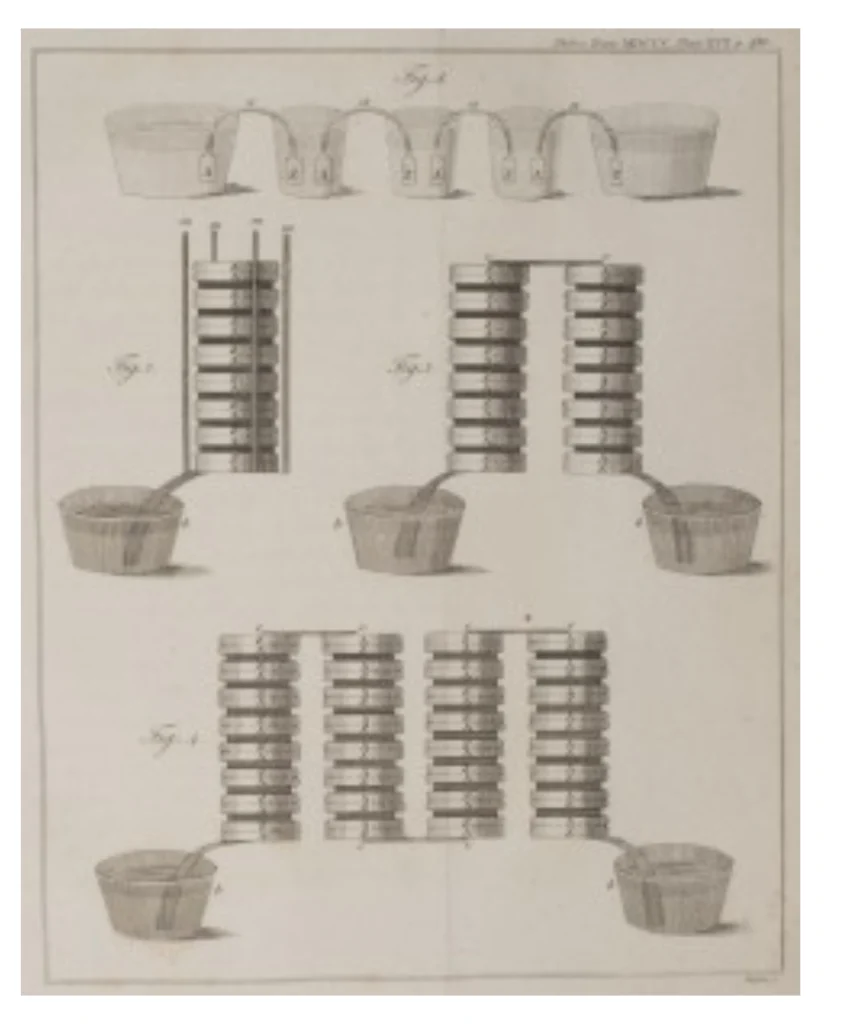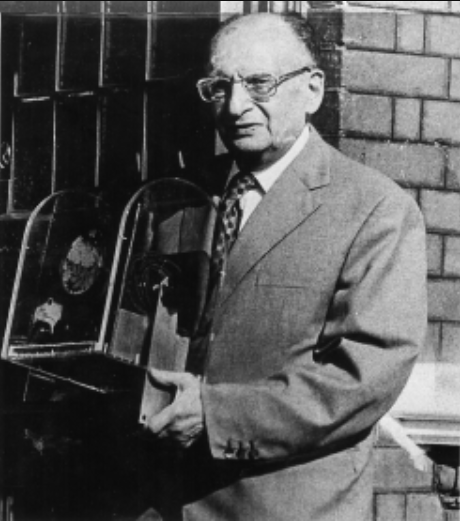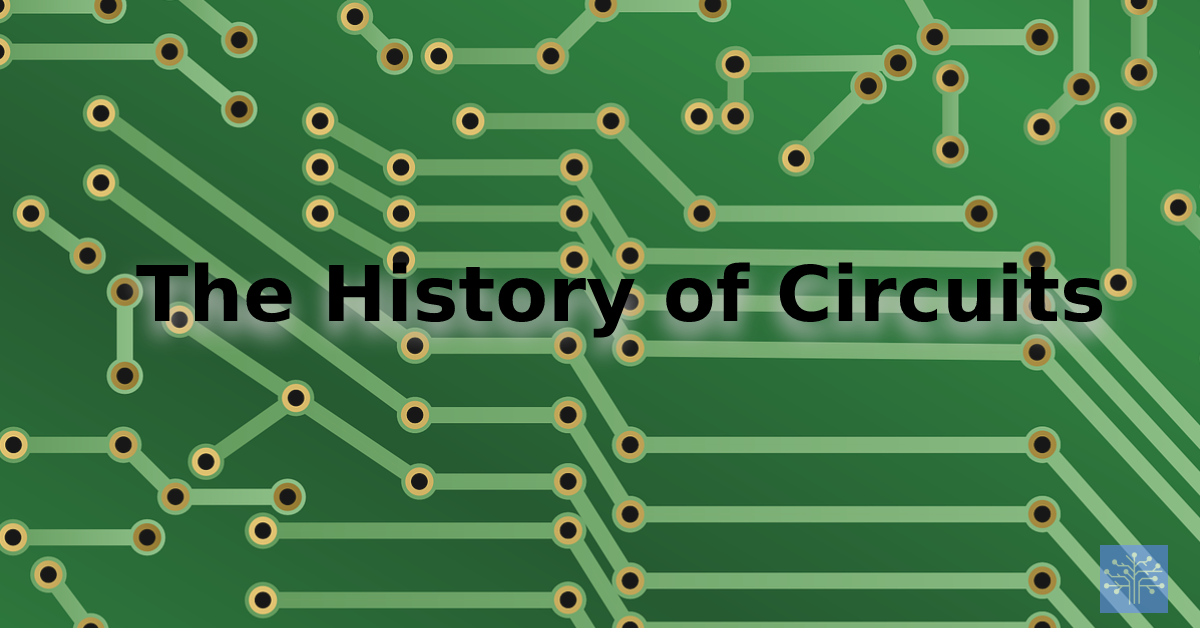Think about a world without computers, smartphones, or even light bulbs. I know, it’s hard to imagine. Circuits, it turns out, are what enables all of these remarkable technologies. Circuits are like unseen superheroes working silently behind the scenes to make technology a reality. Today, we’re going to start an exciting journey through the fascinating history of circuits, which has been shaped by ancient sparks, creative minds, and ground-breaking discoveries. So fasten your seatbelts and prepare to be surprised by the thrilling story of circuits!

Circuits have a long history that dates back to the invention of electricity. A battery, a switch, and a light bulb made up the initial circuits’ basic components. These circuits weren’t particularly useful, but they were used to illustrate electrical principles.
first, take a look at some key points in the History of Circuits!
The Ancient Spark
Since ancient times, people have been fascinated with electricity. Greeks found that rubbing amber against fur made it attract light things more than 2,000 years ago. The oldest type of electrical phenomenon, static electricity, was created at this time.

Volta’s Vital Spark
Volta’s Vital Spark: In 1800, Alessandro Volta created the Voltaic Pile, the first chemical battery. This discovery signalled the start of a brand-new era for electrical circuits. The continuous electric current flow produced by the Voltaic Pile created new opportunities for investigation.
Static electricity was the only way to produce electricity before Volta’s invention, but this was an extremely unstable and unpredictable source of power. On the other hand, the voltaic pile could provide a constant flow of electricity and was a far more dependable and steady source of power.
photo by libraries.mit.edu

Ohm’s Law Lights the Way
Ohm’s Law, a foundational idea for comprehending circuits, was created by Georg Ohm in 1827. The current flowing through a conductor is directly proportional to the voltage applied and inversely proportional to the conductor’s resistance, according to Ohm’s Law. The systematic study of electrical circuits was made possible by this discovery. This is an indirect history of circuits.
Sparking the Revolution
The telegraph, a form of long-distance communication that depended on electrical circuits, was invented in the middle of the 19th century. The invention of Morse code by Samuel Morse, a system of electrical pulses that represent letters and numbers, fundamentally altered communication.
photo by www.kaspersky.com

Edison and the Electric Light Bulb
The practical incandescent light bulb was a ground-breaking invention by Thomas Edison in 1879. By running an electric current through a filament contained in a glass bulb, Edison’s creative circuit design made it possible to create a steady, dependable source of light. The development of circuits was significantly advanced by this discovery. A main turning point in the history of circuits.
Radio Waves Connect the World
By creating radiotelegraphy at the turn of the 20th century, Guglielmo Marconi invented wireless communication. He demonstrated the capacity to wirelessly send signals over great distances, enabling interconnectedness on a global scale. The development of radio shortened distances between people and reduced the planet.
Paul Eisler with the first radio set using a printed circuit chassis and aerial coil. (Photo: Maurice Hubert, Multitech UK)

Transistors
Bell Labs invented the transistor in 1947, a tiny electronic component that can switch and amplify electrical signals. It is a foundational element of contemporary electronics. Transistors took the place of vacuum tubes, enabling electronics to become smaller and more portable. They serve as the fundamental framework for existing electronic circuits.
The main point of modern technology is Transistors also in the history of circuits.
The Integrated Circuit Revolution
The integrated circuit (IC) was created in the late 1950s and early 1960s when engineers figured out how to combine several transistors on a single chip. By allowing the construction of complex circuits on a tiny piece of silicon, ICs changed electronics. The modern world is powered by ICs, from cell phones to space travel.
Microprocessors
The development of powerful computers was made possible by the microprocessor, which was developed at the start of the 1970s. Microprocessors are integrated circuits, that contain the central processing unit (CPU) of a computer. they do calculations, execute commands, and maintain data, they are essential to the operation of modern technology.

From Circuits to the Digital Age
Circuit technology has improved quickly over time. Integrated circuits have shrunk, accelerated, and increased in power. Today, thanks to the extraordinary development of circuits, we have smartphones, smart houses, electric cars, and countless more advances.
these are the main key points in the history of circuits.
A closed path through which electricity can flow is known as a circuit. It is composed of a load, such as a light bulb, a conductor, such as a wire, and an electrical energy source. electricity moves from the source to the conductor to the load, and finally back to the source in a closed path.
We took a thrilling trip through the fascinating history of circuits and examined how they have changed the globe in this article.
Static electricity was first discovered by the Greeks, and then Alessandro Volta created the Voltaic Pile, which produced an uninterrupted flow of electric current.
Georg Ohm’s Law, a fundamental principle that governs circuits, and how Samuel Morse utilized circuits to develop the telegraph and the Morse code for long-distance communication were other topics we studied.
The revolutionary achievements of Thomas Edison, who developed the useful incandescent light bulb and created electrical circuits to ensure a steady supply of electricity, came next.
The darkness had left the planet. The transistor, a little electronic device that replaced large vacuum tubes and enabled the reduction in the size of electrical devices, was then emphasized for its outstanding achievements.
As we investigated how engineers combined several transistors onto a single chip, changing electronics, the integrated circuit (IC) revolution grabbed centre stage.
ICs cleared the path for the development of powerful machines and brought in the current digital era.
then we know about The world of microprocessors, the brain of computers, which is fascinating. Microprocessors are integrated circuits that carry out computations, manage data, and carry out instructions. this is the summary of the history of circuits.
But that is not where the narrative ends.
In most electronic systems, we use PCBs(printed circuited boards) to attach the components.
PCBs

Let’s discuss not only the history of circuits but also current advancements in circuits.
Quantum circuits
Quantum circuits are electronic devices that carry out calculations utilizing the ideas of quantum mechanics. Although they are still in their childhood, quantum circuits have the potential to transform a wide range of industries, including computers, cryptography, and materials science.
Memristors
A type of non-volatile memory called a memristor can store data as electrical resistance. Memristors could take the place of conventional memory technologies like flash memory and be utilized to build innovative circuits like neuromorphic circuits.
Intelligent circuits
Intelligent circuits are those that can learn from their surroundings and adjust to them. Although they are still in the beginnings of their development, intelligent circuits have the potential to change a wide range of industries, including robotics, transportation, and healthcare.
Flexible circuits
Circuits that are flexible can be folded and bent without breaking. Applications for flexible circuits include wearable electronics, medical equipment, and automobile electronics.
3D circuits
Circuits that are built on top of one another are known as 3D circuits. High-performance computing, telecommunications, and aerospace are just a few of the uses for 3D circuits.
these are the future of the circuits.

